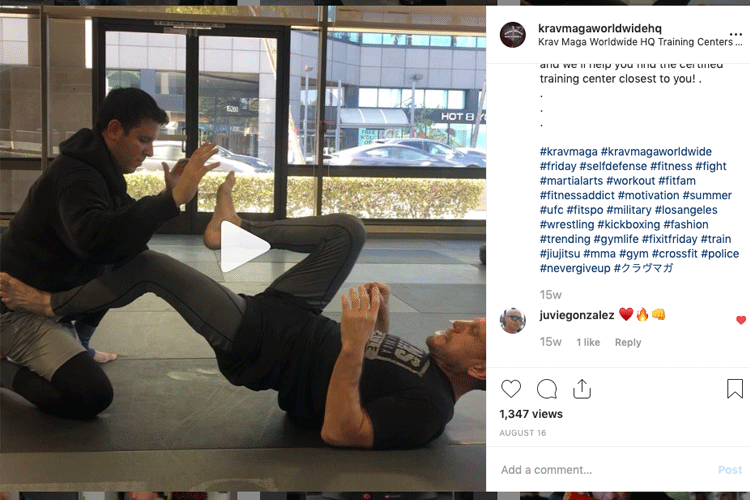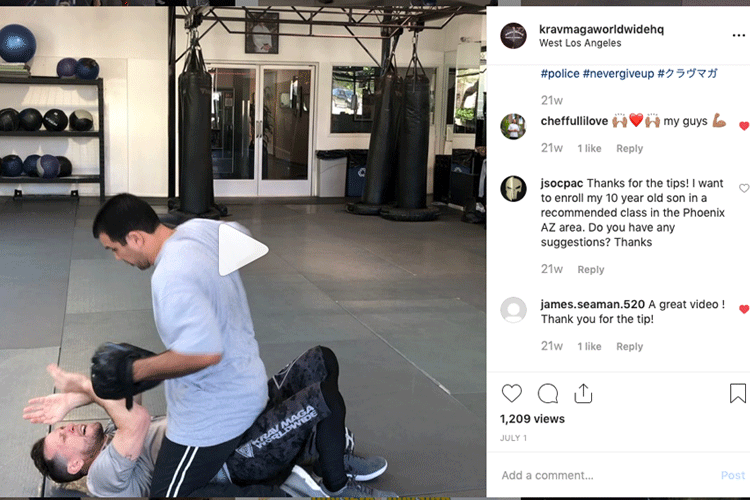Krav Maga vs. Brazilian Jiu-Jitsu
When comparing two styles of self-defense or martial arts there are a few ways to approach the comparison. The most common motive for comparison is to establish or understand which style is superior so that a person can train in that style and receive the best training to help them defend themselves.
If you are thinking about the differences between Krav Maga and BJJ or Brazilian Jiu Jitsu because you want to establish which style you should be training in, it’s important to first look at the styles from a very broad perspective.
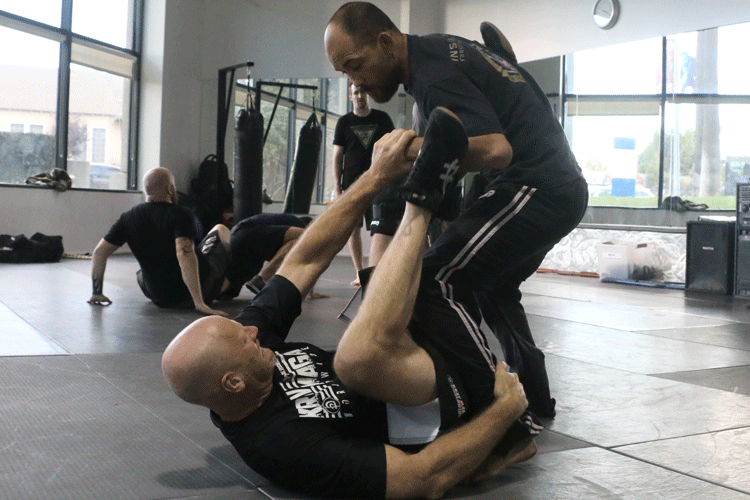
Self-defense and martial arts.
Krav Maga is a self-defense system developed by the Israel Defense Forces for training military personnel in hand-to-hand combat. Krav Maga uses instinctive movements, aggressive counterattacks, and a no-holds-barred mentality without the ceremonial elements of traditional martial arts (for more on the question ‘what is krav maga?’ click here)
Brazilian Jiu-Jitsu is a martial art and combat sport system that has a specific focus on ground fighting and grappling. Derived from Kokudan Judo, Brazilian Jiu-Jitsu utilizes throws and takedowns to get an opponent to the ground, then employs a series of pins or sweep techniques (reversing positions from the bottom) to set up joint locks or strangulation techniques. Application of finishing techniques is not limited to the ground but are most often used on the groun
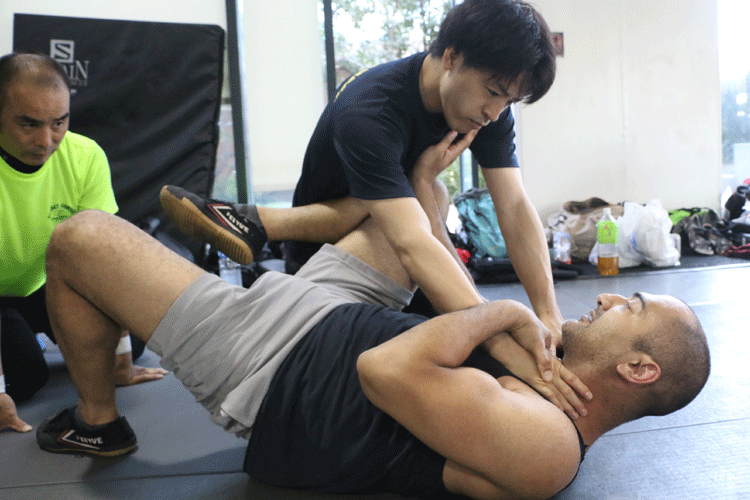
Understanding the details of Krav Maga and jiu-jitsu.
Those are the basic layouts of the two systems in very broad terms. Krav Maga vs. BJJ can be broken down into further detail by examining what they are used for and how they are used.
Krav Maga is a self-defense system that was never intended to be a “combat sport.” Its original purpose was to train soldiers to fight on a battlefield. Krav Maga teaches striking techniques like punches, kicks, knees, and elbows. Krav Maga also teaches grappling techniques and scenario specific self-defense techniques with the ultimate goal of the defender being to damage the attacker enough end the encounter. There is nothing that is considered “dirty” or “illegal” in the Krav Maga system as long as it leads to the defender surviving the encounter. As such, Krav Maga also teaches techniques like eye gouges, groin strikes, head butts, and throat strikes, which would be considered illegal or a foul in a sanctioned sport fight or combat sport competition.
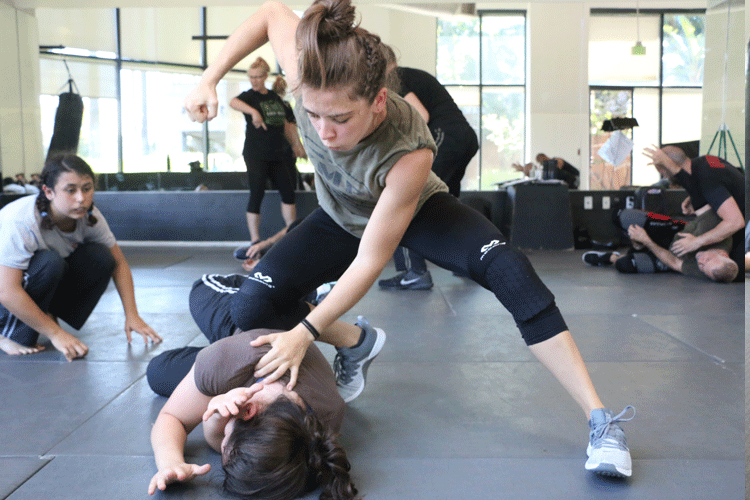
Value in BJJ.
Brazilian Jiu Jitsu is a combat sport that transfers very well self-defense because of it’s emphasis on being in a dominant position on the ground and doing damage to an opponent with joint locks or strangulation techniques. Brazilian Jiu-Jitsu competitions are scored based on takedowns, positional advantages (series of pins and attacks), and finishes via joint lock or strangulation techniques that result in the losing competitor “tapping out”. In competitions, there are techniques that are considered illegal as well as rule sets for what techniques can be used based on the competitors skill (belt) level. Brazilian Jiu-Jitsu helps practitioners develop skills that are very useful in self-defense because the emphasis is on close range fighting and the ground, where many street fights and assaults occur or end up.
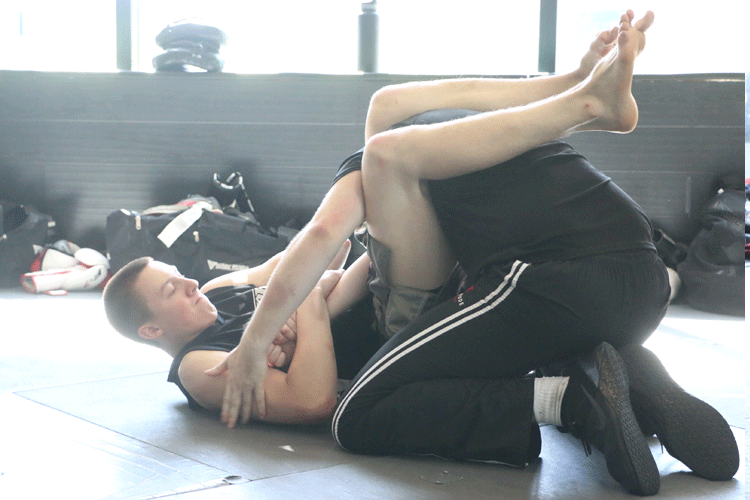
What are your goals for Krav Maga or BJJ?
When considering Krav Maga vs. BJJ for your own training you have to further examine what it is that you want to train for. What is your why? When considering that, there are contrasts between the styles that have to be taken into account.
The biggest contrast in considering Krav Maga vs. BJJ is that Krav Maga is a self-defense system and Brazilian Jiu-Jitsu is a martial art. Krav Maga, as a system, is designed to be learned very quickly, by anyone.
When Israel was first becoming a nation after WWII and training people to serve in the IDF, they had to take people from all walks of life who were immigrating to Israel and teach them to fight…fast. Krav Maga is designed for people to become proficient in hand-to-hand combat in a very short period of time. The system is based on principles that don’t deviate so techniques should look the same almost every time they are practiced or applied. Someone who is training in Krav Maga can learn an effective technique after their first class and develop an effective skill-set and mentality in just a few months.
Learning Krav Maga and BJJ.
On the other hand Brazilian Jiu-Jitsu, as a martial art, takes much longer to learn and to perfect. When you see a skilled Brazilian Jiu-Jitsu practitioner in action, it’s amazing. Training against a skilled Brazilian Jiu-Jitsu practitioner as a novice is a confusing and confounding exercise in futility. Brazilian Jiu-Jitsu requires body control, timing, and anticipation, which come from thousands of hours of hard training. The techniques are open to interpretation in terms of how a practitioner sets them up and applies them, which is an element of its artistry. It takes a good three or four years for a White Belt practitioner of Brazilian Jiu-Jitsu to develop an effective skill-set and to even really understand what is going on in a training session.

The second major contrast when looking at Krav Maga vs Brazilian Jiu-Jitsu is that Krav Maga has a focus on striking techniques while BJJ has a focus on grappling. In both Krav Maga and BJJ there is some crossover in terms of striking and grappling. In fact if you train in Krav Maga you will learn techniques that are derived from Brazilian Jiu Jitsu like using the closed guard in an example like this
or sweeping techniques like this.
Application of Krav Maga and jiu-jitsu.
In Krav Maga however these techniques are used primarily by the defender to get back to the feet. There is very little emphasis on a finish on the ground or by joint lock or strangulation. Conversely, striking techniques in Brazilian Jiu-Jitsu are primarily used to close distance to an opponent and take them down, establish position and finish by joint lock or strangulation. When striking is used the ground in BJJ it’s main purpose is to cause a reaction in the opponent which will help expose the neck or a limb, thereby creating an opportunity to apply a joint lock or choke. Striking is not allowed in most all major Brazilian Jiu-Jitsu competitions but BJJ isn’t completely void of striking techniques.
When people are considering Krav Maga vs. BJJ there’s undoubtedly a curiosity about “who would win in a Krav Maga vs. BJJ fight?” That comes down to myriad variables like who is fighting, where the fight is taking place, when the fight is taking place, how is it taking place. All of these things are going to factor into the outcome.
Testing style vs. style.
Testing style vs. style is one of the reasons that the Ultimate Fighting Championship was started by the Gracie family years ago. Style vs. Style is always intriguing to those interested in self-defense and martial arts so Krav Maga vs Brazilian Jiu-Jitsu is a one of the matchups people are interested in. Since Krav Maga isn’t intended for a rules-based competition, it’s not really a style that people see in combat sports. As a result we encourage people to come and take a class at a certified Krav Maga Worldwide training center and see what Krav Maga Worldwide training is all about.
Krav Maga Worldwide Certified Training Centers.
Krav Maga Worldwide certified training centers are the best place to learn the most effective self-defense near you. Krav Maga Worldwide certified instructors have dedicated years of their lives to learning the Krav Maga self-defense system and learning how to empower others by training. Most certified training centers will let you take a trial class for free so you can experience our training first hand with no strings attached. To find the certified training center closest to you click here and enter your zip code into our searchable map or call us at 800-KRAV-MAGA we’ll help you.

